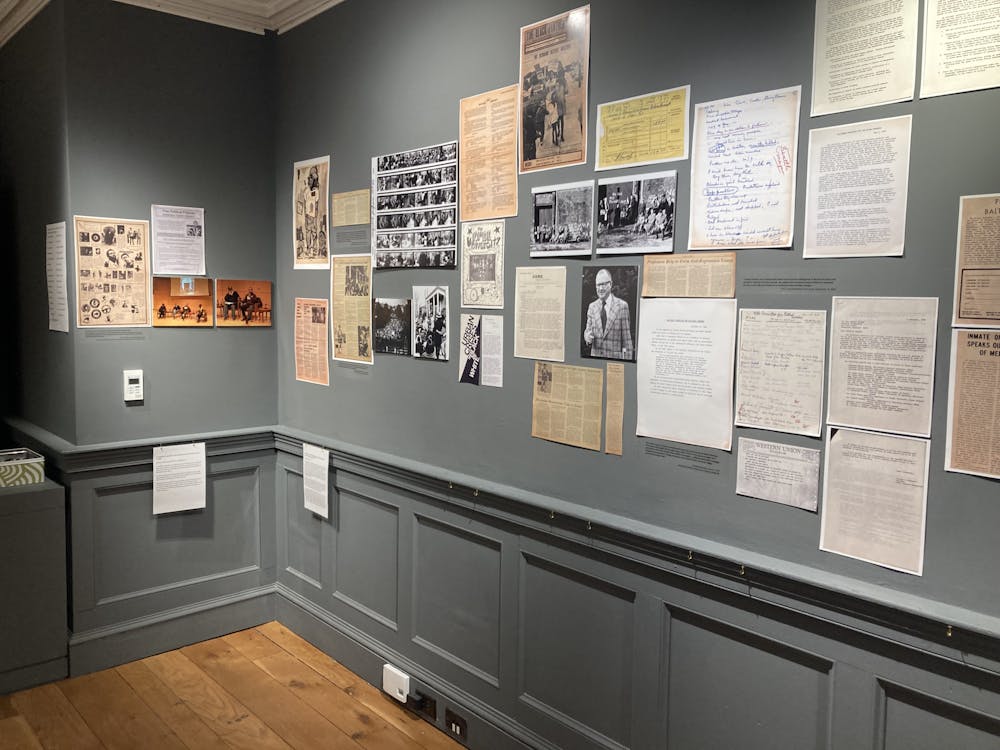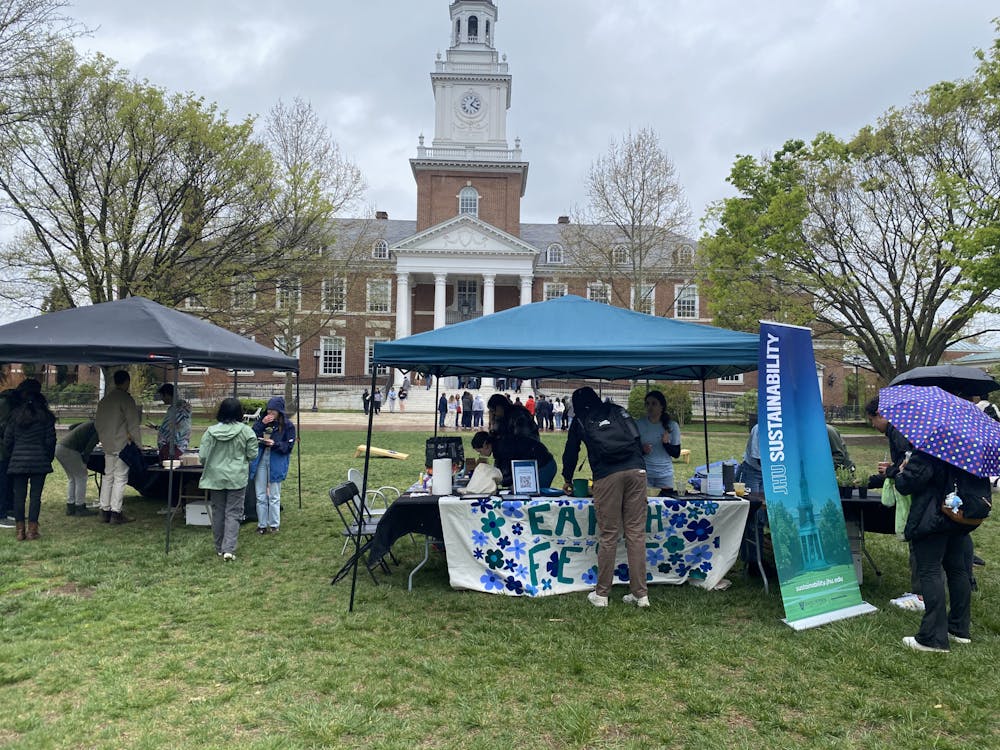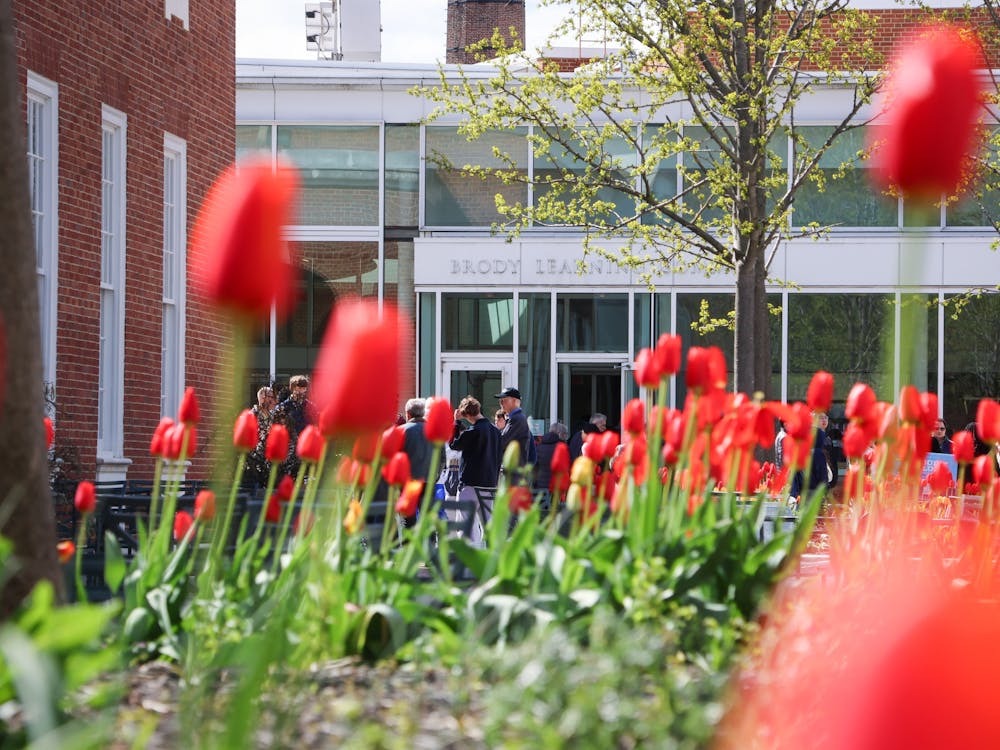In celebration of Black Heritage Month, the Office of Multicultural Affairs (OMA) hosted an exhibit by Paul Rucker, a Baltimore-based artist whom Baltimore Magazine named the city’s “Best Artist” of 2015. The exhibit ran from Feb. 8-9.
The pieces were part of REWIND, Rucker’s largest installation yet. The exhibit uses historical artifacts, music and visual media to shed light on slavery and racism in American history and its continued effects on society.
Rucker, who is also a cellist and composer, has won many awards for his work. Most recently, he was awarded a Guggenheim Fellowship in 2017 from the John Simon Guggenheim Memorial Foundation, an organization dedicated to helping gifted or skilled people work with creative freedom. He has also completed a residency at the Maryland Institute College of Art.
Rucker, whose studio is at Baltimore’s Creative Alliance, thanked Hopkins for displaying his work at the opening day of the exhibit. He went on to explain the meaning behind his work.
“It’s irresponsible to display work without community engagement,” he said. “This could be the start of conversations about disparities and inequalities that we see in Baltimore everyday.”
Rucker is known for incorporating music with his visual displays in the form of original compositions. In order to bring attention to the history of slavery in Baltimore, Rucker lit up locations in the City where African Americans were once sold as slaves during the first Light City Baltimore festival in 2016. These installations were accompanied by a cello composition.
Slavery was a central theme of the OMA exhibit, which included artifacts such as a ball and chain, branding irons, fishing bobbers with bound slaves and derogatory books that caricatured black people.
The exhibit also alluded to contemporary social issues, including a tarp displaying a faceless, hooded figure carrying Skittles and Arizona tea to represent Trayvon Martin, a black teen whose death started the Black Lives Matter movement.
A second tarp of the same size shows a promotion for a 1915 film The Birth of a Nation by D.W. Griffith, known for its offensive portrayal of black men. The film triggered protests upon its release.
Rucker says that the artifacts, most of which he collects from auctions and the online auction site eBay, serve as living proof of racism in the U.S.
“Objects tell stories, and when you have objects, it makes it real. No one can deny slaves were branded if you have branding irons with DNA of slaves on them,” he said. “They were branded when they got here, when they worked on the plantations and runaways were branded as punishment if they were caught.”
He added that he hoped to show the reality of slavery’s impact through his art.
“We don’t have the residue of slavery,” he said. “Around Hopkins, it should be addressed. There’s the legacy of slavery in the Inner Harbor and if you go down there, that story is not acknowledged at all.”
Next to his exhibit in OMA is a musical video that starts with a map of the U.S. As a cello plays, dots proliferate on the screen to show the locations of prisons over the last 100 years.
The video refers to the prison-industrial complex, which he describes to be a criminalization of black people and a result of the exploitation of prisoners for cheap labor. Studies show that the rise in incarceration rates disproportionately affects people of color.
Rucker included several wooden cutouts of cellos, which he said represent human bodies. REWIND also includes a newspaper that describes the history of injustices in the U.S., from slavery to excessive police force.
He hopes that his work serves as a catalyst for activism and dialogue.
“We actually need to look at history, how things have been repeating over and over again,” he said. “We went through the exact same thing in the country 100 years ago, American Protectionism, anti-immigration. We can’t have intelligent discussions surrounding the issues unless we are informed about what happened.”
Rucker hopes that REWIND helps people reflect more thoughtfully on racism as a continuity in the U.S. He also hopes that people will be able to come with personal understandings of his artwork.
“Everyone brings in their own experience to the gallery. [In the audience], you have a large diverse group of people who came from different parts of the world,” he said. “Every country has its own history of atrocity.”
Correction: The original article read that Rucker received his Guggenheim Fellowship in 2015. He is actually a 2017 Guggenheim Fellow.
The article has also been updated with Rucker’s clarification of the prison-industrial complex.















Please note All comments are eligible for publication in The News-Letter.